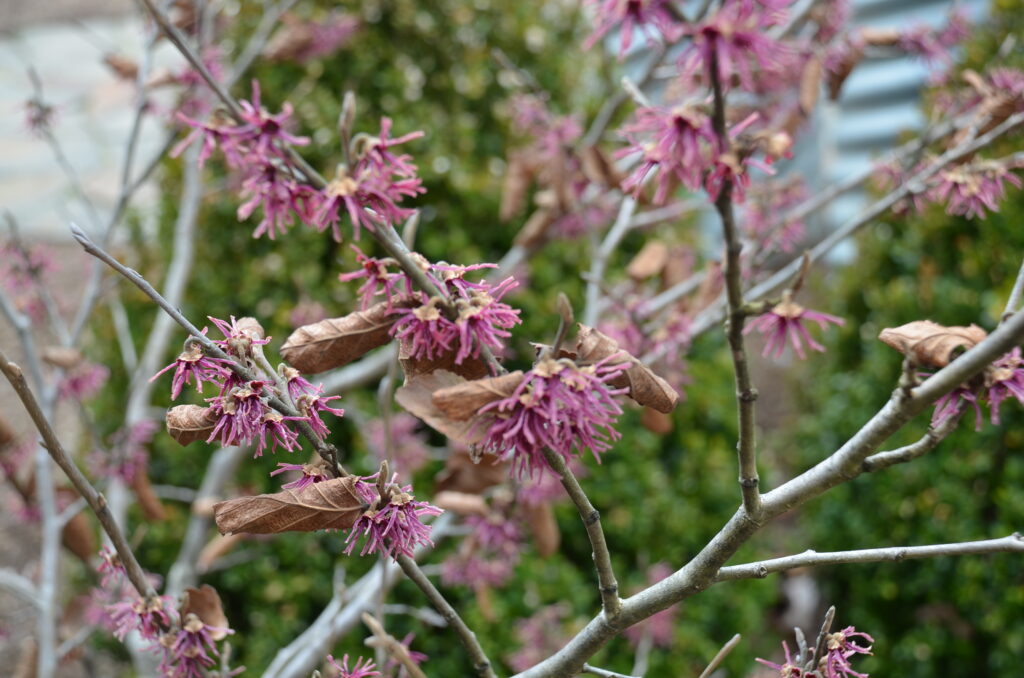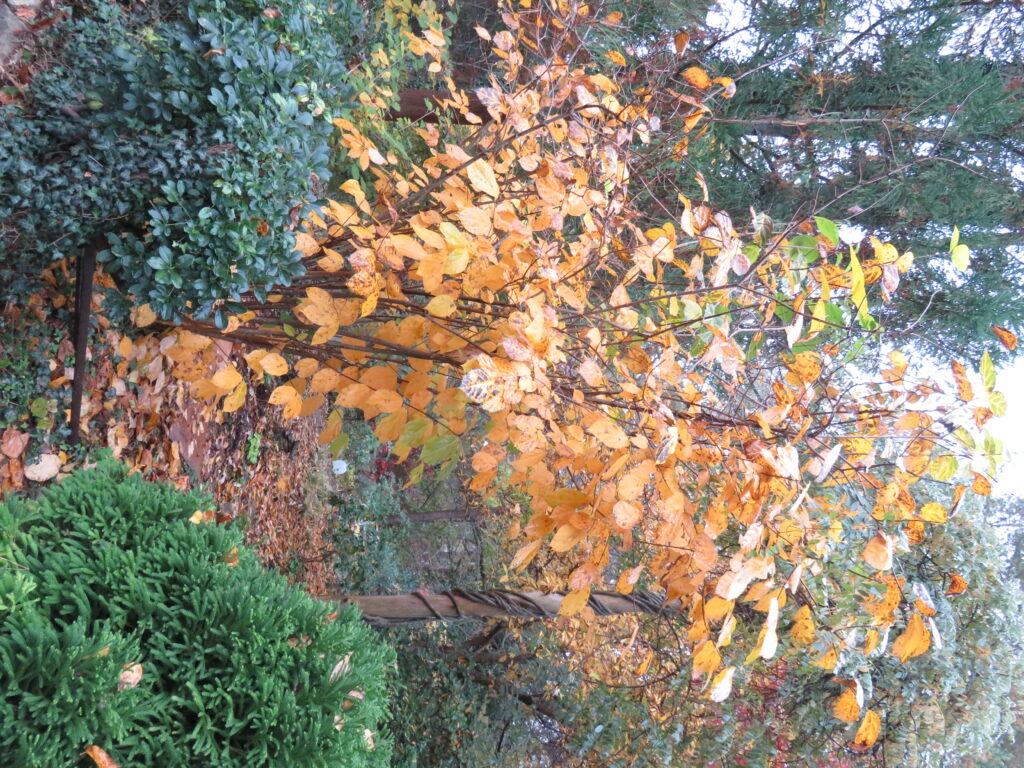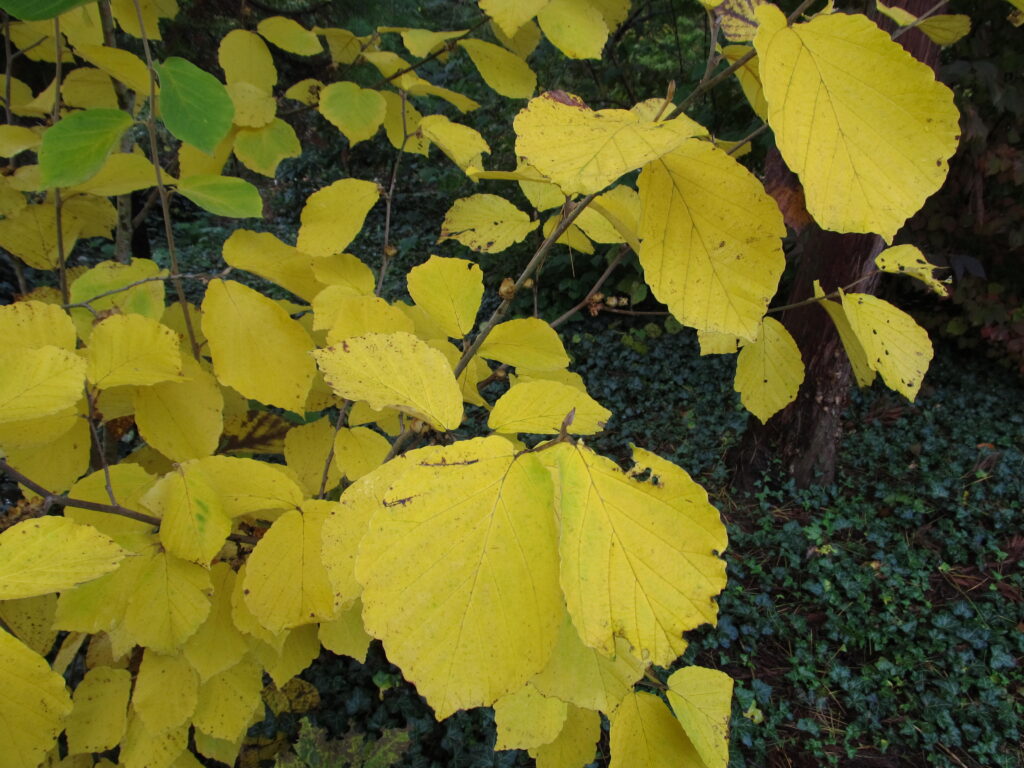
Vernal witchhazel is a U.S. native to the Ozark Plateau extending from southern Missouri through northwestern Arkansas to eastern Oklahoma. It is among the easiest of shrubs to grow @ 10-12 feet tall and two-thirds as wide. Roots spreads by underground stoloniferous.
The leaves are oval, 23⁄4–5 inches long and 2 1/2 –5 inches wide and are slightly oblique at the base. Leaf edges are wavy-toothed and shallowly lobed. Leaves are dark green above, and glaucous beneath, and often persist into the early winter.

Flowers are deep to bright red, rarely yellow, with four ribbon-shaped petals 0.28–0.39 inches long with four short stamens arranged in clusters. Flowers of vernal witchhazels emerge in late winter (December to March). On warm wintry days native and some honeybees work the fragrant blooms
Tiny individual fruits (3⁄8–5⁄8 inch long) are dehiscent hard woody capsules which split explosively at the apex at maturity one year after pollination and propel two shiny black seeds 30 or more feet from branches. Seeds take up to two years to germinate.
Most witchhazels may also be started by vegetative cuttings collected in early winter and rooted in a cool greenhouse under bottom heating. Pruning, if needed, can be performed in any season. Rarely in a wild population will you come upon a variant (see cultivars below).

‘Amethyst’ – is a rounded bush that grows 8 to 10 ft. tall and wide with
gray-green foliage that turns a brilliant red and orange in autumn. Deep
red purple flower best backed by some lighter color. lightly fragrant, reddish purple blossoms in mid-winter.
‘Quasimodo’ – a semi-dwarf selection (4-6 feet tall) introduced to the European nursery industry in 1980. Light orange flowers are highly fragrant, along with a compact-spreading habit. Spring foliage is richly greenish-blue and remains quite attractive throughout the season.
‘Autumn Embers’ – an 8-10 feet shrub with showy, fragrant, copper-red flowers.

 Posted in
Posted in 
